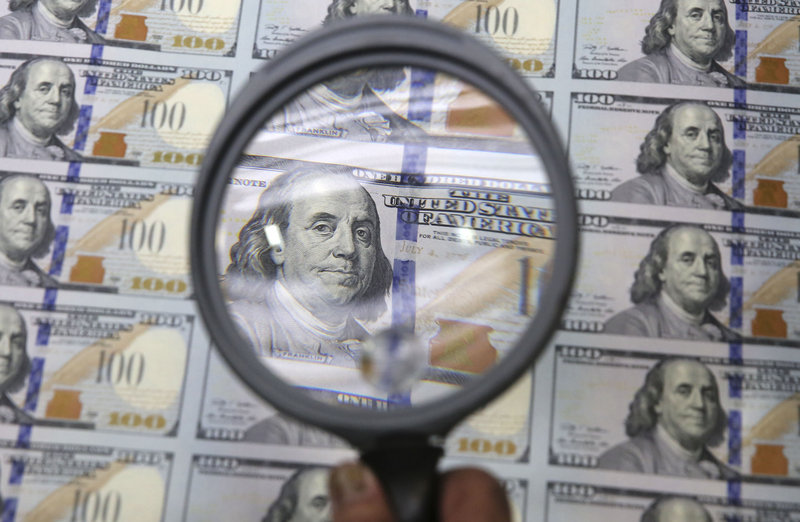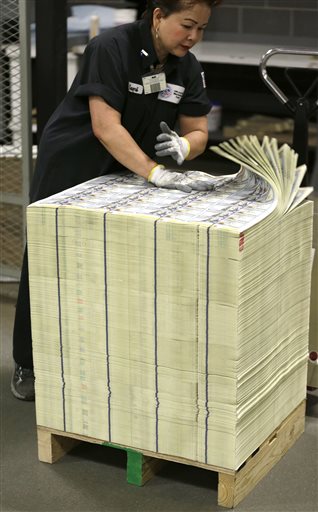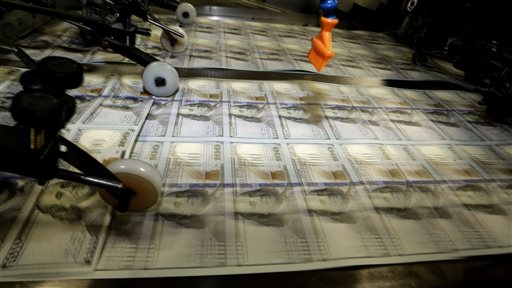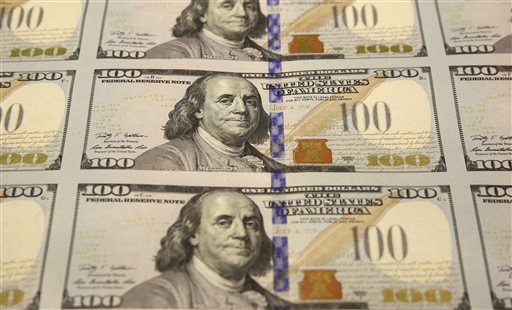FORT WORTH, Texas — A glitzier, high-tech version of America’s $100 bill is rolling off the presses and headed for wallets soon.
Despite years of production-related delays, the updated $100 bill has undergone a major makeover that includes a color-changing ink well, 3-D security ribbon, and more texture on Benjamin Franklin’s collar.
The new, more expensive C-note is scheduled to enter circulation Oct. 8 and also has a higher calling: It aims to fight back against counterfeiters by using better printers and technology.
The modifications will help people check for fake $100s without going to a bank or using a blacklight, said Michael Lambert, a deputy associate director at the Federal Reserve.
“We try and find security features that can be used at a number of different levels, from more experienced cash handlers … down to the person on the street who really needs to know the security features so they can protect themselves,” Lambert said in an interview Wednesday.
The new $100 bill still bears the image of Franklin, one of America’s Founding Fathers. But it adds part of the Declaration of Independence, written in script from Franklin’s left shoulder to the right edge of the bill. A quill and an ink well are printed behind the text, and a blue ribbon goes down near the center of the bill.
The ink in the well changes colors from copper to green when the bill is turned. A watermark of Franklin also appears on the right side of the bill when it’s held up to light.
The Federal Reserve said in its latest currency budget that it would order 2.5 billion new $100 bills this year. Lambert estimated each new bill costs about 4 cents more to print than the old one, totaling an additional $100 million in costs this year.
The Fed also budgeted about $9.5 million this year for its education program, which includes global outreach efforts about the new note.
The government has redesigned the $5, $10, $20 and $50 bills during the last decade to add security features. The $1 remains the only bill not to get a makeover.
At a federal facility in Fort Worth, 32-bill sheets of money paper are printed, stamped with serial numbers and sliced into individual notes. The notes are sorted into piles 100 deep, banded together and stacked into 4,000-note bricks. Those bricks will be shipped to Federal Reserve banks across the U.S.
Send questions/comments to the editors.







Success. Please wait for the page to reload. If the page does not reload within 5 seconds, please refresh the page.
Enter your email and password to access comments.
Hi, to comment on stories you must . This profile is in addition to your subscription and website login.
Already have a commenting profile? .
Invalid username/password.
Please check your email to confirm and complete your registration.
Only subscribers are eligible to post comments. Please subscribe or login first for digital access. Here’s why.
Use the form below to reset your password. When you've submitted your account email, we will send an email with a reset code.